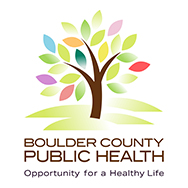Lesson Plans
By educating students about the risks of tobacco and nicotine use in class, teachers can help prevent the use of tobacco products. Many schools include these topics in their health or prevention classes. Regardless of the class, young people are most likely to listen and learn from teachers with whom they are familiar, so take the opportunity to discuss these topics with the young people you teach.
Learning about tobacco and nicotine products is an essential component of any health class and should be discussed along with other substance use topics.
Visit the FDA Prevention and Education Resource Center to find lesson plans, interactive tools, infographics, and videos featuring tobacco facts and tips on how to educate youth about the dangers of vaping.
Elementary School
Although many young people are not thinking about tobacco and nicotine products in elementary school, some children this age can access these items, so it is important to start the discussion early.
Be Vape Free is a free program created for 5th graders to address the use of e-devices. It includes several lesson guides that take 30-40 minutes each to complete. The program provides an educator guide, classroom slides, and all needed materials.
Middle/High School
Data tells us that our high schoolers are already using tobacco and nicotine products, and that our middle schoolers are at least experimenting with them. Ensuring that they have the facts and know the health risks is essential, whether they are current users, have experimented, or have never tried a tobacco or nicotine product.
Taking Down Tobacco, created by the Campaign for Tobacco Free Kids, includes three activities on products and their health risks, as well as marketing and advertising tactics used by the tobacco and e-device industries. This program is ideal for middle school-aged students.
Young Minds Inspired: Is it Worth It? includes three lessons intended for use with middle school-aged students. The lessons are activity-based and focus on health effects, marketing, and how to resist peer pressure. A teacher kit and resources are provided. Lessons are also available in Spanish.
Catch My Breath is a free program that covers e-devices. There are different versions: 6th grade, 7th-8th grades, and 9th-12th grades. All versions contain four lessons, each 30-40 minutes long, that include activities and necessary materials.
Counter Tobacco Youth and Community Engagement Activities are longer-term projects that examine point-of-sale and advertising. The activities can be conducted in a classroom setting or used to engage youth in policy and decision-making within their community. All activities include a downloadable guide that outlines objectives, provides instructions, and lists necessary materials. These activities are appropriate for middle and high school-aged students.
The Stanford Tobacco Prevention Toolkit includes 13 lessons covering all tobacco and nicotine products. Lessons include presentations, activities, fact sheets, and discussion guides. The program is appropriate for middle and high-school-aged youth.
Scholastic/FDA: The Real Cost of Vaping includes lesson plans on e-devices based on health consequences, a research project, and marketing tactics. Lesson plans, handouts, and additional resources are provided. There are separate programs for grades 6-8 and 9-12; each includes three lessons.



